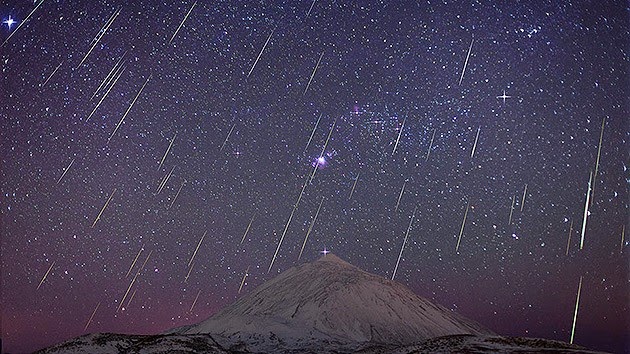Lluvia de estrellas en Chile en la noche del 22 de Abril - Starfall in Chile on the night of April 22
La lluvia de estrellas "Líridas", visible cada año durante abril, tendrá esta noche su momento de mayor actividad, llegando a mostrar entre 10 y 20 meteoritos por hora en el cielo. El fenómeno, conocido como la "lluvia de primavera" en el hemisferio norte, se produce porque la órbita de la Tierra coincide con restos dejados por el cometa Thatcher (C/1861 G1), que se demora 415 años en dar una vuelta completa al Sol. La lluvia ha sido observable en la Tierra desde hace más de 2.600 años y usualmente ocurre entre los días 16 y 25 de abril. Recibe su nombre al originarse en la constelación de "Lira". Si bien su observación en el hemisferio norte suele ser temprano, en el sur, suele ser visto de mejor manera después de las 1:00 horas y hasta el amanecer. La ventaja de las "Líridas" es que la lluvia puede ser vista sin instrumental profesional, mirando sobre la línea del horizonte, hacia el norte. La recomendación es estar en una zona alejada de grandes ciudades, para evitar la contaminación lumínica. Este año, la baja visibilidad de la Luna permitirá una mejor observación. Quienes quieren seguir el evento sin salir de sus casas, podrán hacerlo a través de internet. El Slooh Community Observatory realizará su tradicional transmisión de las "Líridas", desde las 9:00 de la noche, mientras que la NASA hará lo propio en el canal de Ustream del Marshall Space Flight Center, desde la medianoche (hora de Chile).
The falling stars "Lyrids" visible every year during April, will tonight its peak activity, reaching between 10 and 20 show meteors per hour in heaven. The phenomenon, known as the "Spring Rain" in the northern hemisphere occurs because the Earth's orbit matches left by the Thatcher (C / 1861 G1) comet, which takes 415 years to complete one round remains to Sol. The rain was observable on Earth for more than 2,600 years ago and usually occurs between days 16 and 25 April. Named to originate from the constellation of "Lira". While its observation in the northern hemisphere is usually early in the south, is often seen better after 1:00 pm until dawn. The advantage of the "Lyrids" is that rain can be seen without professional instrumental, looking over the horizon to the north. The recommendation is to be in an area away from large cities to avoid light pollution. This year, the low visibility of the moon will allow better observation. Those who want to follow the event without leaving their homes may do so through internet. The Slooh Community Observatory hold its traditional transmission of "Lyrids", from 9:00 pm, while NASA will do the same in the Ustream channel of the Marshall Space Flight Center, from midnight (Chile).


